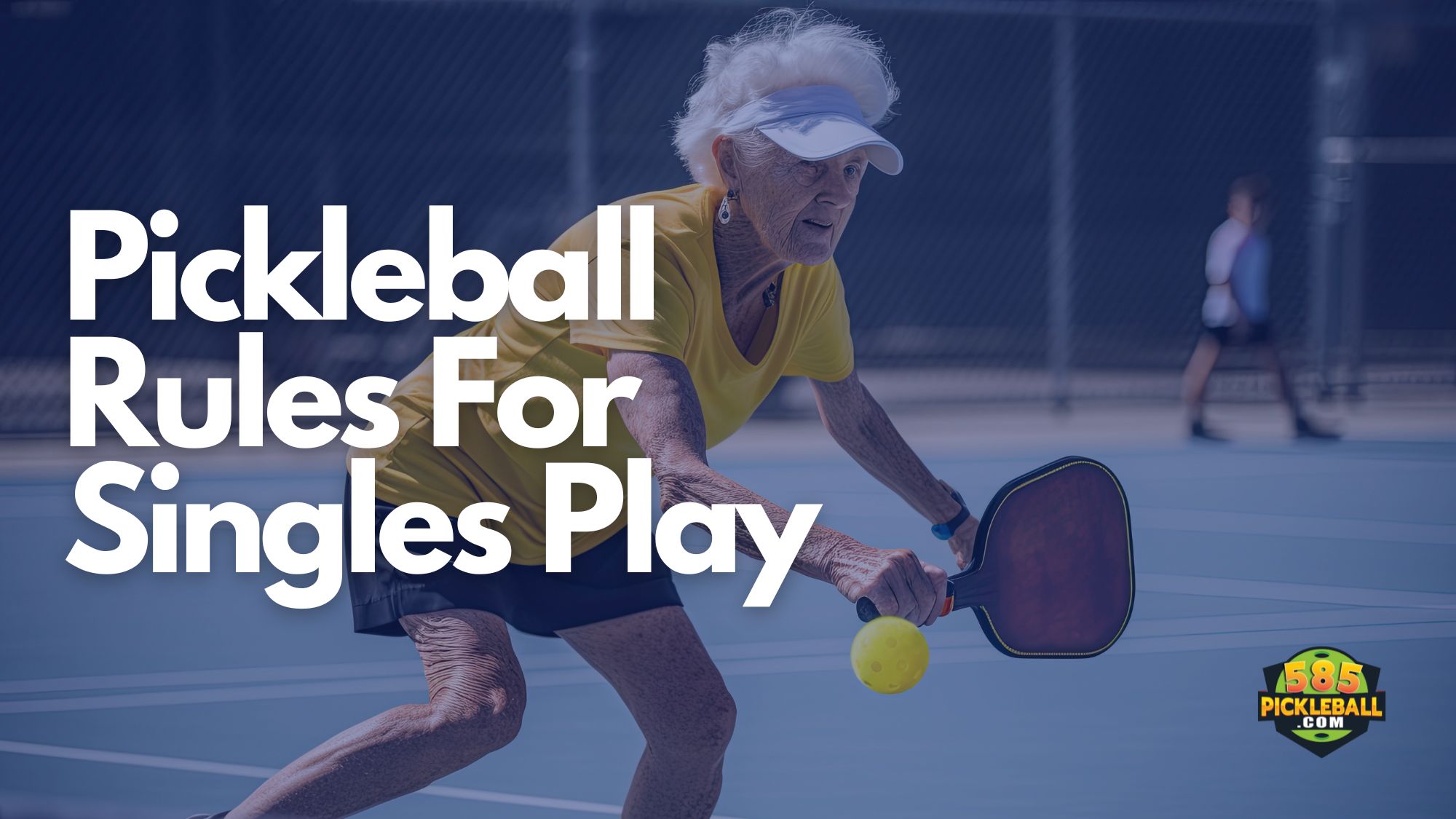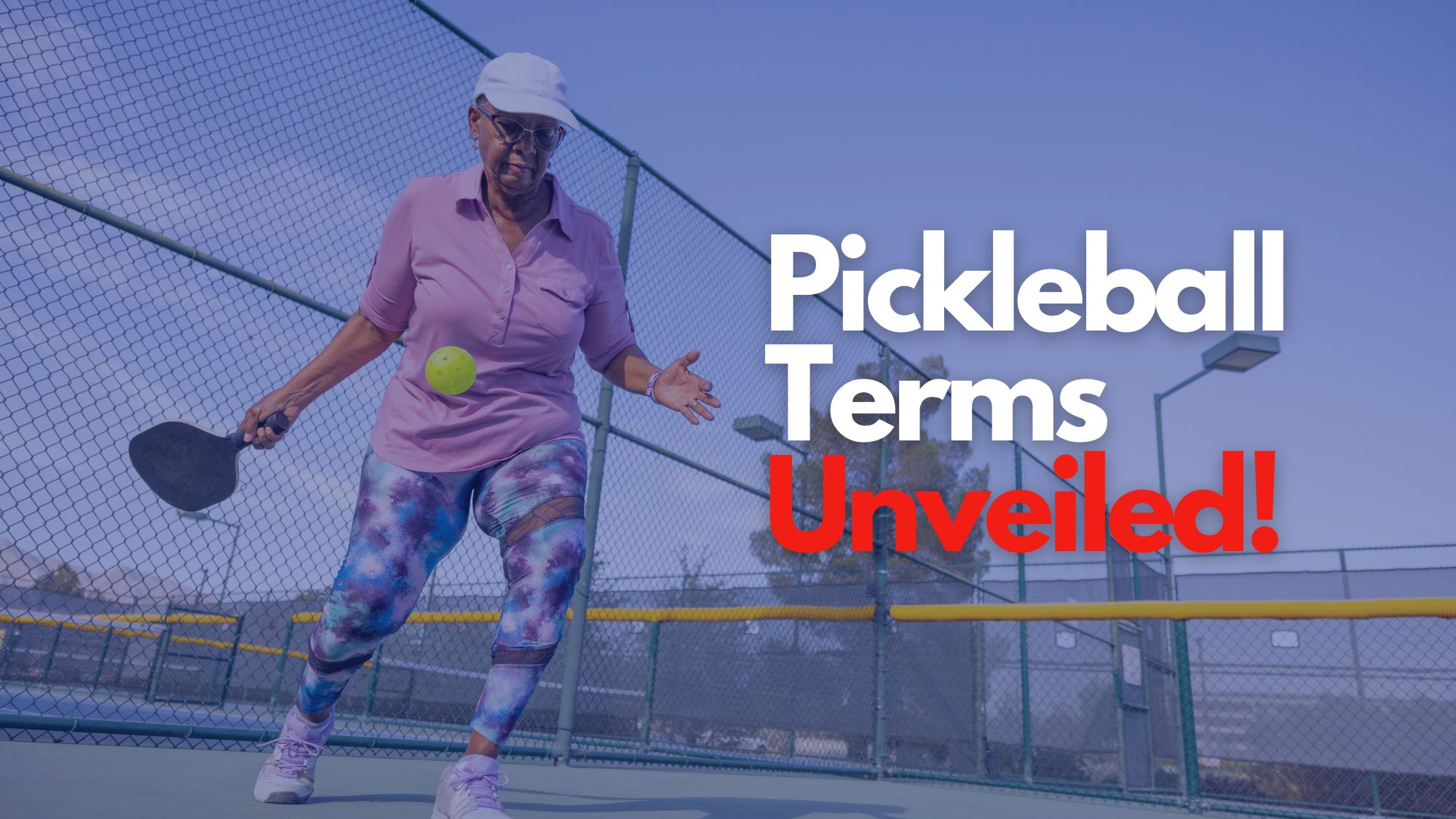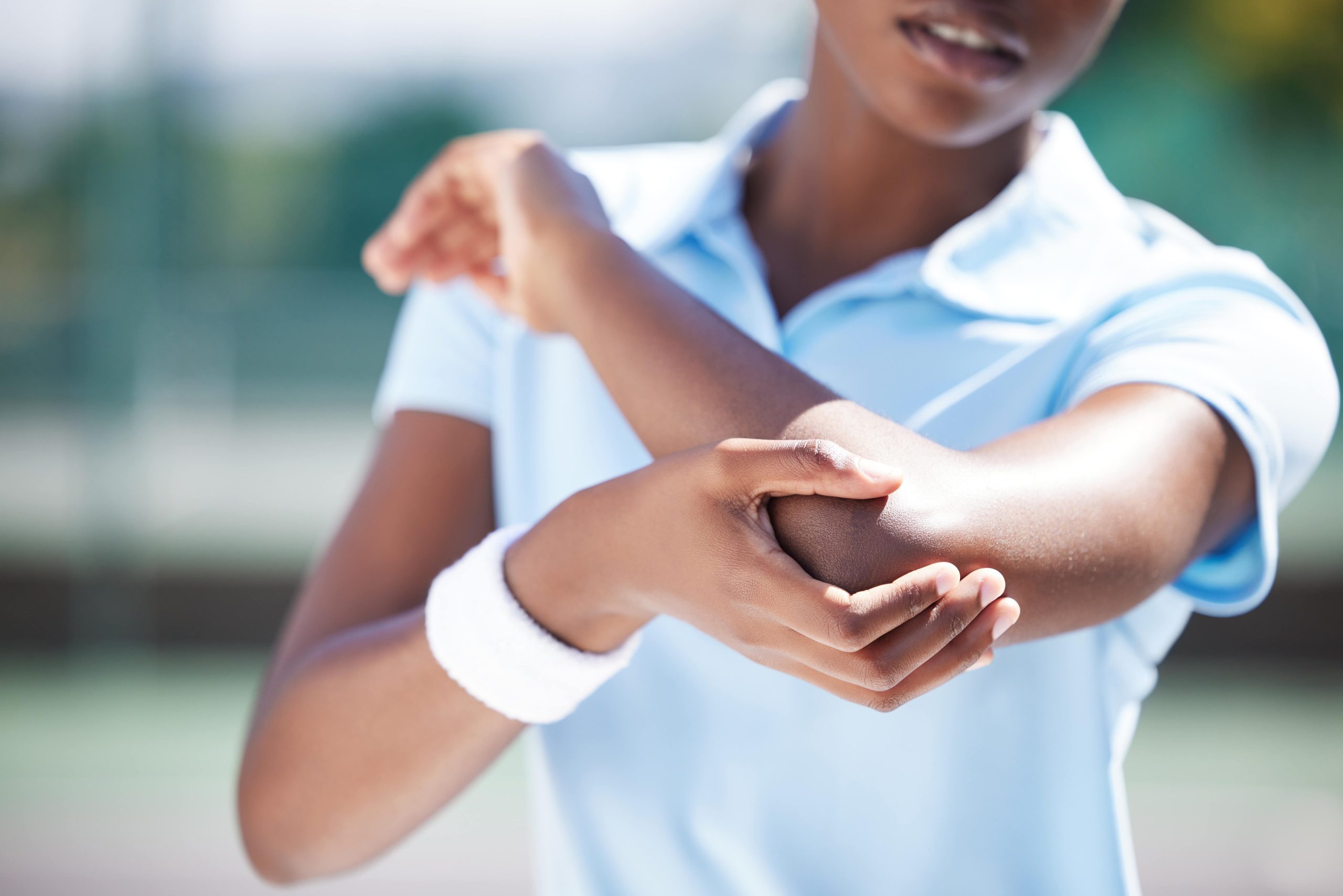In this post, we will explore the best pickleball paddles for tennis elbow specifically designed to provide you with the relief and support you need.
Pickleball is an addictively fun sport that has taken the world by storm, and it’s no wonder why. But this exhilarating game can sometimes feel like a double-edged sword for those battling the nagging pain of tennis elbow.
We’ll delve into what causes tennis elbow, remedies, prevention tips, and, most importantly, how to choose the perfect pickleball paddle tailored to your needs.
Table of Contents
ToggleUnderstanding Tennis Elbow
Tennis elbow, medically known as lateral epicondylitis, is a condition that can cause sharp pain on the outer part of your elbow. It occurs when the tendons that connect the forearm muscles to the lateral epicondyle (that bony bump on the outside of your elbow) become inflamed.
This inflammation can lead to discomfort, tenderness, and limited range of motion in the affected arm.
Symptoms of tennis elbow
The symptoms of tennis elbow typically include:
-
- Pain or tenderness on the elbow’s outer side may gradually worsen over time.
-
- The affected arm’s weakness makes it challenging to grip or lift objects.
-
- Pain that worsens with activities that involve gripping, twisting, or lifting, such as shaking hands or turning a wrench.
What causes tennis elbow?
Tennis elbow, or lateral epicondylitis, is a condition that can affect not only tennis players but also individuals engaged in various activities that involve repetitive arm and wrist movements. To understand what causes tennis elbow, let’s dive into the contributing factors:
-
- Repetitive Stress: The core cause is the repetitive stress endured by the tendons and muscles attached to the outer elbow, typically resulting from activities involving frequent gripping, twisting, or lifting.
-
- Poor Technique: Inefficient technique, like incorrect grips or excessive force application, significantly heightens the risk of tennis elbow.
-
- Overuse: Engaging in activities without sufficient rest and recovery can lead to overuse injuries. Frequent, intense play without proper conditioning exacerbates the condition.
-
- Age and Repetition: As we age, tendons become less resilient, making repetitive movements more likely to cause injury, especially in older adults.
-
- Work-Related Tasks: Individuals performing repetitive tasks at work, such as gripping tools or typing extensively, may also develop tennis elbow.
-
- Equipment Factors: Equipment in racket and paddle sports can influence the risk. Inappropriate weight, grip size, or lack of vibration-dampening features can exacerbate the problem.
-
- Additional Risk Factors: Factors like smoking, obesity, and pre-existing musculoskeletal conditions can further increase the risk.
Understanding these contributing factors is crucial because players can proactively prevent and manage tennis elbow. In the world of pickleball, where players of all ages and skill levels enjoy the game, it’s essential to be aware of these causes and take measures to protect against this common overuse injury.
The Best Pickleball Paddles For Tennis Elbow
Selecting the best pickleball paddle for tennis elbow relief requires considering multiple factors, including weight, core type, grip size, surface texture, and personal preference.

-
- Core Type: Polypropylene polymer honeycomb core.
-
- Weight: Available in various weight options.
-
- Grip Size: Choose from different sizes.
-
- Surface Texture: Slightly textured for control without excessive friction.
-
- Why: The polymer core offers excellent shock absorption, and Selkirk paddles are known for their quality and comfort.

Gamma Legend Pickleball Paddle

-
- Core Type: Polymer honeycomb core.
-
- Weight: Different weight options.
-
- Grip Size: Available in various sizes.
-
- Surface Texture: Slightly textured face for control.
-
- Why: Known for its advanced technology that minimizes vibrations and shock, offering comfort during play.

-
- Core Type: Nomex honeycomb core.
-
- Weight: Available in different weight options.
-
- Grip Size: Various grip sizes.
-
- Surface Texture: Smooth surface with minimal texture.
-
- Why: The paddle is designed to absorb impact and vibrations, which can be beneficial for players with tennis elbow.
The top 5 remedies for tennis elbow
Experiencing the discomfort of tennis elbow can be frustrating, but several effective remedies and treatments can alleviate the pain and promote healing. Here are some proven strategies:
1. Rest: Giving your affected arm adequate rest is crucial. Avoid activities that worsen the pain and allow the tendons to heal.
2. Ice: Apply ice to the affected area for 15-20 minutes several times daily to reduce inflammation and alleviate pain.
3. Compression: Wearing a compression band or brace on the forearm can provide support and reduce strain on the tendons.
4. Physical Therapy: Consult a physical therapist who can recommend exercises to strengthen forearm muscles and improve flexibility, aiding in recovery.
5. Ergonomic Adjustments: Ensure your workspace or sports equipment is set up ergonomically to reduce strain on your forearm muscles and tendons.
These remedies are often effective in managing tennis elbow and can be used in combination for optimal results. However, it’s essential to consult a healthcare professional for personalized advice and treatment options, especially if the condition persists or worsens.
How to prevent tennis elbow
Preventing tennis elbow is often more manageable than treating it once it has developed. Here are some effective strategies to help prevent tennis elbow:
1. Proper Technique: Use correct technique and grips when participating in activities that involve repetitive arm movements, such as swinging a racket or paddle.
2. Warm-Up and Stretch: Prior to engaging in physical activities, ensure you warm up and perform stretching exercises for your forearm, wrist, and elbow to prepare your muscles and tendons.
3. Strength Training: Include forearm and wrist strength exercises in your fitness routine to build resilience in your tendons.
4. Rest and Recovery: Allow your arms and elbows sufficient time to recover between activities, and incorporate rest days into your schedule to prevent overuse.
5. Equipment Check: Ensure that your sports equipment, such as rackets or paddles, is suitable for your skill level and physique, paying attention to grip size, weight, and vibration-dampening features.
By following these preventive measures, you can significantly reduce the risk of developing tennis elbow and continue to enjoy your favorite sports and activities without the fear of discomfort and injury.
Can you get tennis elbow from playing pickleball?
Pickleball players, like tennis players, are susceptible to this condition if they do not use proper technique, do not give their bodies adequate time to rest and recover, or if they use equipment that is not well-suited to their needs.
Therefore, it’s important for pickleball enthusiasts to be aware of the risk and take preventive measures to minimize the chances of developing tennis elbow and to use proper techniques and equipment to help reduce strain on the forearm muscles and tendons.
Is there a difference between pickleball paddles?
Pickleball paddles come in various shapes, sizes, materials, and designs; each factor affects the paddle’s performance and feel. Here are some key differences to consider when comparing pickleball paddles:
-
- Material: Paddle faces can be made from graphite, composite, wood, or aluminum. Each material offers different levels of power, control, and durability.
-
- Core Type: Paddle cores are typically made of polymer, aluminum, or Nomex materials. The core type influences the paddle’s feel, power, and control.
-
- Weight: Paddles come in various weight ranges, from lightweight to heavyweight. The weight affects your ability to generate power and maneuverability.
-
- Grip Size: The grip size of a paddle can vary, and it’s essential to choose a grip size that feels comfortable and allows for proper control and maneuvering.
-
- Paddle Shape: Paddles come in different shapes, including widebody, elongated, and traditional shapes. The shape can impact your reach, sweet spot size, and control.
-
- Edge Guard: Some paddles have edge guards or rim protection, which can help prevent damage to the paddle and provide extra durability.
-
- Texture and Surface Finish: The texture and surface finish of the paddle face can affect the amount of spin you can put on the ball and your overall grip.
Choosing the right pickleball paddle involves considering your playing style, skill level, and personal preferences. It’s important to test different paddles to find the one that feels most comfortable and effective for your game.
Choosing the best pickleball paddle for tennis elbow
Here, we’ll explore the key factors to consider when choosing the best pickleball paddle for tennis elbow relief:
1. Weight:
-
- Opt for a light to mid-paddle to reduce strain on your arm. Lighter paddles are generally easier on the elbow and wrist but have less power and sweet spot control.
-
- Lighter paddles are easier to maneuver and require less effort to swing, reducing the strain on your arm, wrist, and elbow.
2. Core Type:
-
- Look for a paddle with a soft or cushioned core material, such as polymer. These cores absorb shock and vibration, protecting your arm from excess strain.
-
- The softer feel of polymer cores is gentler on your arm, making it a suitable choice for tennis elbow patients.
3. Grip Size:
-
- Ensure the grip size is comfortable and suits your hand. A proper grip size prevents overexertion and discomfort.
-
- Ideally, your grip should allow you to comfortably place your index finger between the end of your fingers and the paddle’s palm.
-
- An ill-fitted grip can exacerbate the condition, potentially significantly worsening it. In such cases, opting for a smaller grip size and gradually building it up to your ideal size is advisable.
4. Surface Texture:
-
- Paddles with textured or rough surfaces provide better ball control and grip, reducing the need for excessive force and minimizing strain on your arm.
Conclusion
In conclusion, finding the right pickleball paddle for tennis elbow can significantly affect your comfort and enjoyment of the game.
You can select a paddle that provides the relief and support you need by considering weight, core type, grip size, and surface texture. Please remember to prioritize proper technique and take preventive measures to reduce the risk of developing tennis elbow.
With the right paddle and proactive care, you can continue to play pickleball confidently and without the nagging pain of tennis elbow. So, choose your perfect paddle, and prepare to take your pickleball game to new heights!
So you’ve caught the pickleball bug and you’re ready to up your game in singles play, huh? With so many things to …
Unlock the game of pickleball by mastering its unique language. In this indispensable guide, we dissect essential pickleball terms every player needs …
Let's dive into the exciting world of pickleball as we uncover the best indoor pickleball courts in Seattle. Embracing pickleball opens the …
In this post, we will explore the best pickleball paddles for tennis elbow specifically designed to provide you with the relief and …





